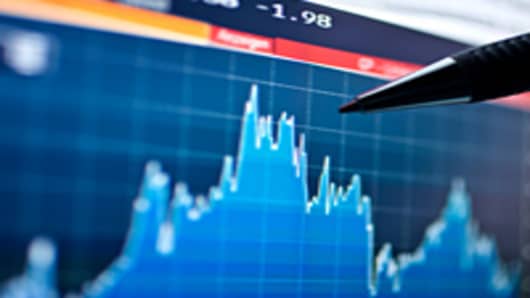In case you’re wondering what a post-QE2 stock market might look like, Nomura Securites strategist Bob Janjuah has an answer, and it’s not pretty.
Federal Reserve intervention through its quantitative easing programs, in particular QE2, slapped more than 250 points onto the S&P 500’s 2010 closing at 1,257. So if calculations from Janjuah and his co-analyst Kevin Gaynor are correct, the market could be in for a wake-up call in the next couple of months.
Specifically, they think the market is in for a hard landing after climbing upward on the Fed’s liquidity.
Janjuah offers a blistering analysis of the way the Fed has managed – some might say “manipulated—the market. An excerpt:
“The obvious problem is that the US has an excess debt problem and a central bank that seeks to solve asset bubbles that burst by creating new asset bubbles. This policy has been proved a failure. Remember that debt does not equal wealth, that asset bubbles do not equal wealth, that more liquidity does not equal money but instead equals more debt, and that liquidity does not equal capital.”
And more:
“We think QE1 and QE2 have failed the real economy in the US at the expense of pushing up asset prices in financial markets, eg house prices vs. stocks. Most American families own a home, but most Americans do not own a meaningful amount of stocks. Bernanke's solution seems to rely on the US public buying into another round of bubble blowing and on the idea of trickledown economics. I doubt the US people will accept that. In fact, QE2 could be an own goal as we think it is going to increase the cost of food and energy for all US citizens without any corresponding increase in real wages.”
The analysis concludes that there will be too much political pressure for the Fed to push QE3 through the market. At that point, the real damage begins.
But first the S&P could push its way up to 1,350 before setting up for a fall. The first leg down would be at least to 1,220 and ultimately to the “mid-1000s” in the March/April time frame.
The Nomura analysts are aware that market doomsayers have been around for as long as there has been a market, and that this particular cycle has brought ever-vocal calls for a correction.
But they join a minority chorus that is finding troubling parallels between the current market and the one in place a year ago. In early 2010, the economy appeared to be growing again, stock prices were rallying and there even was talk about an exit strategy for the Fed.
The market followed that heady time with a 200-point drop in the S&P.
The Nomura analysis worries that investors in general are getting too confident and ignoring the many risks out there.
“This is the primary reason why, on a multi-year basis, we remain so concerned about the outlook for risk assets, Western equities in particular, and why the levels of volatility and risk valuations of late 2008-early 2009 are still possible targets over the next few years,” Janjuah wrote. “Policymakers may indeed have won a few battles recently, but the substantial real economy global imbalances and, in financial markets, the extremely fat tail (especially policy) risks that exist are not only being ignored, they are actually getting bigger.”
________________________________________________
Questions? Comments? Email us at NetNet@cnbc.com
Follow Jeff @ twitter.com/JeffCoxCNBCcom
Follow NetNet on Twitter @ twitter.com/CNBCnetnet
Facebook us @ www.facebook.com/NetNetCNBC



